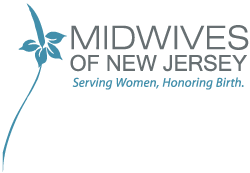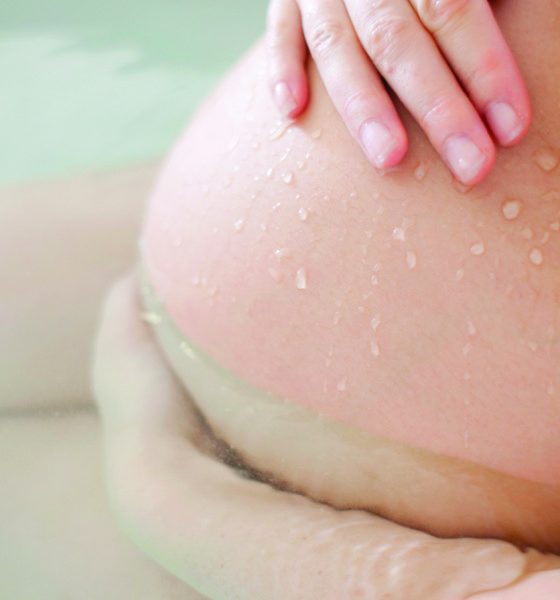Women defend right to Waterbirth
It’s letters like these that have a tremendous impact on natural childbirth and women’s health. Waterbirth will remain at Morristown Memorial Hospital because of testimonies like these.
I am writing in response to ACOG’s recent position regarding the clinical benefit and safety of waterbirth. As both a mom, and a health care provider, I respectfully disagree with their statement and refute their examination of the “evidence” as outlined on their website.
As a mother, I’ve experienced 3 healthy waterbirths with the assistance and loving care of the Midwives of NJ. My first 2 children were born at Hackettstown (2008, 2010) and my third child was born in Morristown (2012). All of my birth experiences were tranquil and relaxed, yet efficient and most importantly unmedicated. I received careful monitoring throughout all stages of labor, and during delivery, including proper fetal monitoring, cervical checks, and measurement of vital signs. All 3 of my children were large, with the smallest weighing in at 8 lbs, 8 oz and the largest being 9lbs 10 oz. I did not require any additional intervention in order to deliver my children, and despite their size, I only required 2 stitches with the first birth. My children all had an Apgar score of 9, nursed successfully within minutes and continue to be healthy and happy to this day. I attribute my successful labor and post partum recovery to the benefits of birthing in the water.
As a health care provider, I take issue with ACOG’s evaluation and interpretation of the water birth literature. I agree with the author’s of the statement in that there is a paucity of data concerning “immersion” labor and/or birth, and recognize that there are limitations in the small amount of information available. I also agree that proper candidate selection, maintenance/cleaning procedures, infection control protocols, fetal/maternal monitoring and protocols for emergency events need to be put in place prior to a successful waterbirth program. I’d like to highlight that the Midwives of NJ have such policies and procedures in place, as well as a wealth of data from their practice supporting the clinical benefit of waterbirth and the low incidence of adverse maternal/fetal outcomes.
ACOG calls into question the benefit of waterbirth while highlighting the potential risk. They concur with the 2009 Cochrane analysis which suggests that immersion during the 1st stage of labor decreases the use of epidural anesthesia and reduces the amount of time for the 1st stage of labor. They neglect to discuss how these benefits will likely impact the second stage of labor, especially as it relates to the use of anesthesia, which is known to slow or stall labor as well as reduce the efficiency of contractions. I believe that one can assume that a reduction in epidural anesthesia would translate to quicker and more efficient delivery.
I call into question the purported “risks” ACOG mentions in their statement. In reading the article closely, their basis for their definition of risk and their negative opinion of immersion during labor is based on a case report of 4 birth outcomes in which the fetus suffered respiratory distress, with 1 death, and a 20 year old case series from the UK.
I read the primary literature outlined in ACOG’s statement. The Alderice et al. article is a case series from 1993 in the UK in which midwives were asked to retrospectively evaluate the births they’ve attended. First the data is based on retrospective questionnaires, which is inherently flawed by recall bias. Secondly, it is hard to draw parallels between the UK in 1993 and the United States in 2014. It is near impossible to measure the advances in the training of health care providers, monitoring of both mother and fetus and improvements in medication that have occurred over the last 20 years. However despite the previous points and if you just evaluate the numbers, you will find an even less compelling argument for risk. On closer inspection of the data you will find that of the 4494 births occurring in the water:
- 12 babies died (0.26%) although this was not thought to be related to being born in the water or to the general birth process
- 51 babies (1.13%) suffered morbidity as a result of respiratory distress and/or infection
- 33 mothers (0.73%) suffered hemorrhage and/or trauma
While all of these cases are serious, with some being tragic, it is important to note that birth in general is not without risk to both mother and baby. I quickly reviewed the 2009 March of Dimes fetal mortality data, and found similar birth outcomes for “land” births:
- Infant mortality rate 6.4 per 1000 live births (0.64%)
- Babies suffering RDS (respiratory distress syndrome): 14.4 per 100,000 live births
While the risk/benefit profile of waterbirth has not been clearly defined in the literature, one can easily “Google” the risk/benefit of epidural anesthesia during labor/delivery. The one benefit of epidural anesthesia is maternal comfort. Interestingly, this is only one of the many reported benefits associated with waterbirth. On the converse, the number and severity of risks associated with epidural anesthesia is well characterized and defined through both randomized clinical studies, case reports and described by professional associations. For example, from the American Pregnancy Association’s website, I found a list outlining the following adverse events of epidural anesthesia:
- You may experience a severe headache caused by leakage of spinal fluid. Less than 1% of women experience this side effect. If symptoms persist, a procedure called a “blood patch”, which is an injection of your blood into the epidural space, can be performed to relieve the headache.
- After your epidural is placed, you will need to alternate sides while lying in bed and have continuous monitoring for changes in fetal heart rate. Lying in one position can sometimes cause labor to slow down or stop.
- You might experience the following side effects: shivering, ringing of the ears, backache, soreness where the needle is inserted, nausea, or difficulty urinating.
- You might find that your epidural makes pushing more difficult and additional interventions such as Pitocin, forceps, vacuum extraction or cesarean might become necessary
- For a few hours after the birth the lower half of your body may feel numb. Numbness will require you to walk with assistance.
- In rare instances, permanent nerve damage may result in the area where the catheter was inserted.
- Though research is somewhat ambiguous, most studies suggest that some babies will have trouble “latching on” causing breastfeeding difficulties. Other studies suggest that a baby might experience respiratory depression, fetal malpositioning, and an increase in fetal heart rate variability, thus increasing the need for forceps, vacuum, cesarean deliveries and episiotomies.
Interestingly, a similar list of risks can be found on ACOG’s website as well. However, unlike their statement on waterbirth, they do not have a strong position on the use of epiduiral anesthesia for vaginal birth, despite the obvious and clearly studied and defined risks to both mother and baby.
Therefore, I urge you to read and evaluate ACOG’s statement and the “supporting literature”, listen to your patients and practitioners, and allow the safe practice of waterbirth to continue. I urge you, Morristown Memorial Hospital, the Atlantic Health care System, and the Midwives of NJ to continue collecting and publishing data on the safety and benefit of midwifery and waterbirth practices so that one day, my children will not have to fight this uphill battle for a natural birthing option.
Thank you for your consideration.
Warm Regards,
Jessica, Pharm. D.








 Patience Urged to Reduce C-Section Rate
Patience Urged to Reduce C-Section Rate